Nakraudfandili: 15 most successful projects of 2017
In the past year, hundreds of startups and inventors stormed crowdfunding platforms. For the most fortunate of them, the risk and wasted efforts were fully justified. We are talking about 15 projects that have attracted millions of dollars on Kickstarter and Indiegogo over the past 12 months.
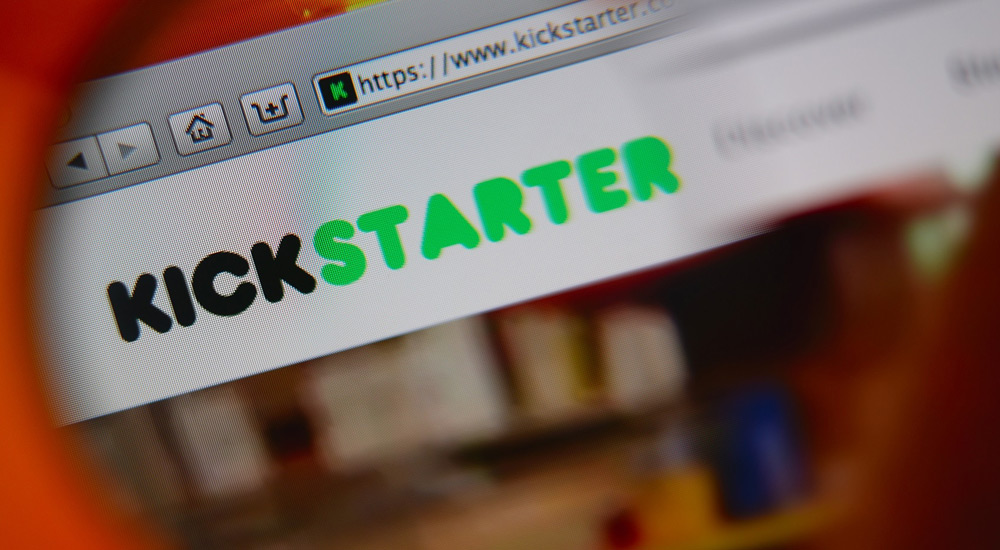

Raised: $ 5,333,792 with a target of $ 50,000.
Deliveries: started on time, in September 2017.
')
In early spring, Swiss startup MyKronoz launched a campaign of hybrid watches ZeTime on Kickstarter. The event at that time seemed insignificant, because dozens, if not hundreds of companies have already tried to create such a device. The results of their collective efforts were invariably disappointing.
However, the developers of ZeTime unexpectedly broke the current bad tradition. How? Elementary! In one watch they connected two convenient interfaces: physical hands and a liquid-crystal touch-screen. The design may seem too cumbersome, but it seems that such hybrid watches were needed by an ordinary person. When using the clock screen, the arrows move apart and do not obscure the information on it. The rest of the time they do what the shooters are supposed to - they show time. MyKronoz competitors tried to replace a full-fledged display with separate LEDs, make the arrows show information, but all this turned out to be not a smart and inconvenient way to bend the user under the designer's will. Nobody likes crutches.
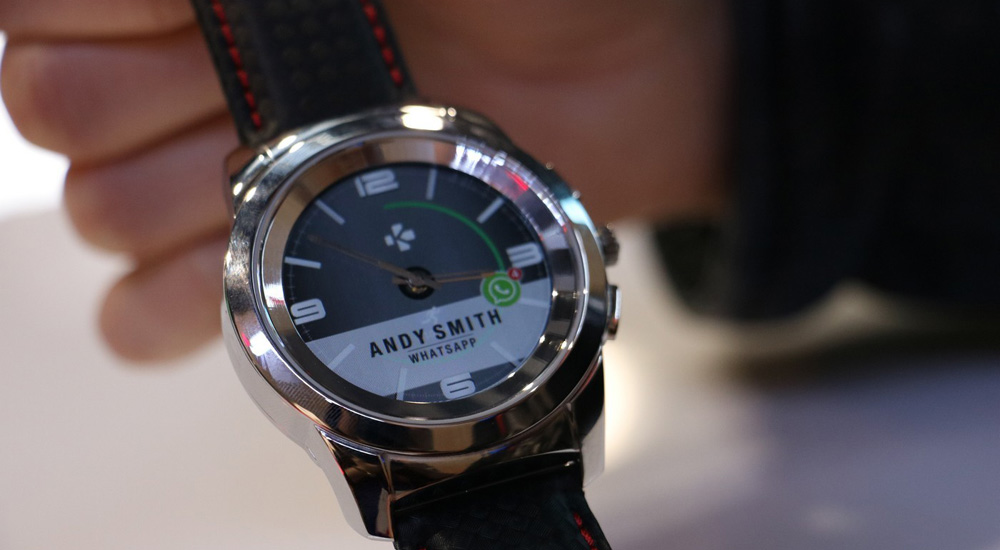
The ZeTime battery is designed for 3 days of active use of watches in “smart” mode, or for a whole month of work in the mode of a regular chronometer (this is not a measly 18 Apple Watch). Waterproof case, optical pulse sensor - just a nice bonus to a decent device.

Raised: $ 4,729,263 with a target of $ 21,500.
Deliveries: started on time, in October 2017, there was a delay due to an increase in the volume of orders.
Can't sleep? It turns out that a heavy blanket (and not your light, downy) helps you sleep soundly. At least, exactly the solution to the problems with sleep was promised by John Fiorentino, the creator of the therapeutic blanket Gravity. At first, he advertised his development as a remedy for anxiety, “Vietnamese syndrome”, ADHD and stress, but then he had to give up bold statements. Kickstarter, where funds were raised for the production of miraculous devices, prohibits the promotion of medical products.

However, the blanket remained on the site and collected thousands of orders. There are three Gravity options - weighing 9 kilograms, 6.8 and 11.3 kilograms. Weights are polyethylene granules of high density. Ideally, a therapeutic blanket should be 10% of the weight of the owner, then the person wrapped in it feels comfortable. Such blankets often cover children with autism and elderly patients with dementia. There is no research that reliably confirms effective improvement of sleep or treatment of mental disorders. Therefore, Gravity is definitely the hardest placebo that has ever successfully conducted a crowdfunding campaign.

Raised: $ 4,236,618 with a target of $ 200,000.
Deliveries: scheduled for January 2018, so far everything is going according to plan.
It seems that the next round of development of virtual reality technology is ending again. That, however, does not prevent enthusiastic engineers from continuing to develop a non-standard format using existing developments - and the Pimax 8K VR helmet is an excellent symbol of the persistence of interest in this topic.

Pimax is developed by the same Chinese startup. The device has the most generous resolution on the market: 3840x2160 pixels for each of the two screens. The viewing angle is 200 degrees, the refresh rate is 75–90 hertz. Moreover, the device is compatible with base stations Steam VR, that is, supports tracking, like the glasses HTC Vive, and works with the same controllers. The displays are made using CLPL technology, which, according to the developers, is much better suited for VR than OLED. For Pimax, this is not the first helmet, so the new campaign was met with criticism from VR skeptics and the joy of virtuality fans.

Collected: ~ $ 3,794,620 with a target of ~ $ 60,000.
Deliveries: scheduled for December 2017, but disrupted due to manufacturing problems.
2017 was really happy for all those people who hate brushing their teeth. Now they will be able to entrust the boring pursuit of a smart brush to Amabrush, which completely autonomously copes with bloom and stuck delicious pieces. The gadget consists of a vibro-pen and a universal interchangeable silicone cap in the form of a cap with bristles. The cap is magnetized to the handle, after which the latter is placed in the mouth and vibrates for ten seconds. Toothpaste is fed to the bristles from the capsule inside the handle. There is also a battery, the charge should be enough for two weeks of operation of the device. An unusual invention caused the revival of his campaign on Kickstarter, and on Indiegogo even appeared a copy of Amabrush - Unico brush. In the battle for teeth and wallets, the creators of the second device raised the stakes, promising complete cleaning in as little as 3 seconds.
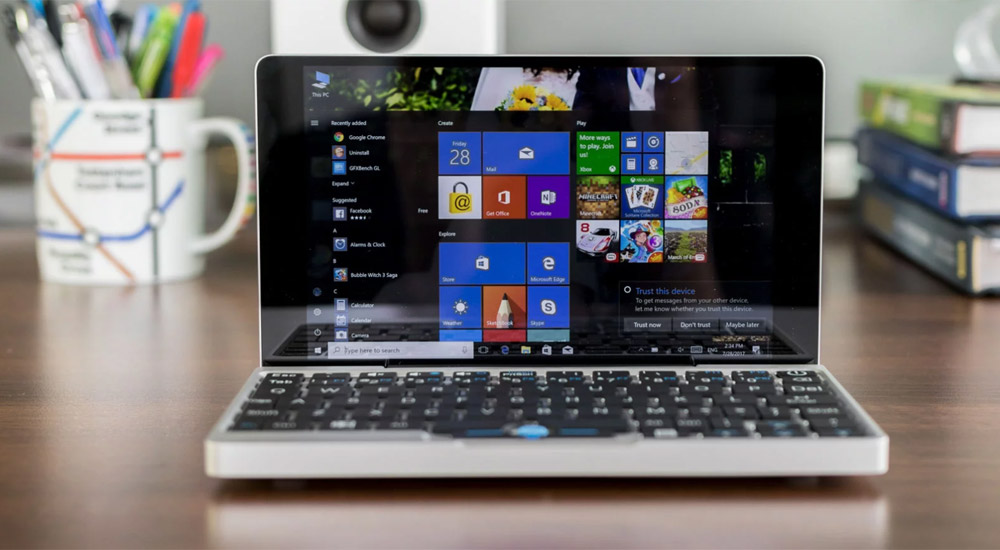
Collected: $ 3,567,642 with a target of $ 200,000.
Deliveries: started successfully in June and are still ongoing.
In The Verge edition, the laptop GPD Win was clearly called "a wonderful gaming laptop that fits in your pocket." Alas, miracles do not happen, so in fact the device is quite an ordinary netbook, like its predecessor GPD Pocket, successfully financed by Indiegogo. It really fits in your pocket, because the diagonal of the device is only 7 inches, a little more than the Nintendo Switch. The mini-netbook is equipped with a quad-core Intel Atom processor with a clock speed of 1.6 GHz, 8 gigabytes of RAM and 128 gigabytes of permanent memory. The case is made of magnesium alloy, it provides active cooling (that is, cooler). Display touch, liquid crystal, with IPS-matrix. Lithium-polymer battery is designed for 12 hours of work, and all this hardware works under Ubuntu or Windows 10 Home. It is clear that GPD is indeed possible, but not everything, and a tiny screen causes more problems than the integrated video card. According to user feedback, Cuphead, Overwatch and Witcher 3 are running on a typewriter. The Shenzhen company GPD HK, which developed the GPD Pocket, is preparing to release the second version of the pocket notebook. It will be available for pre-order in January.
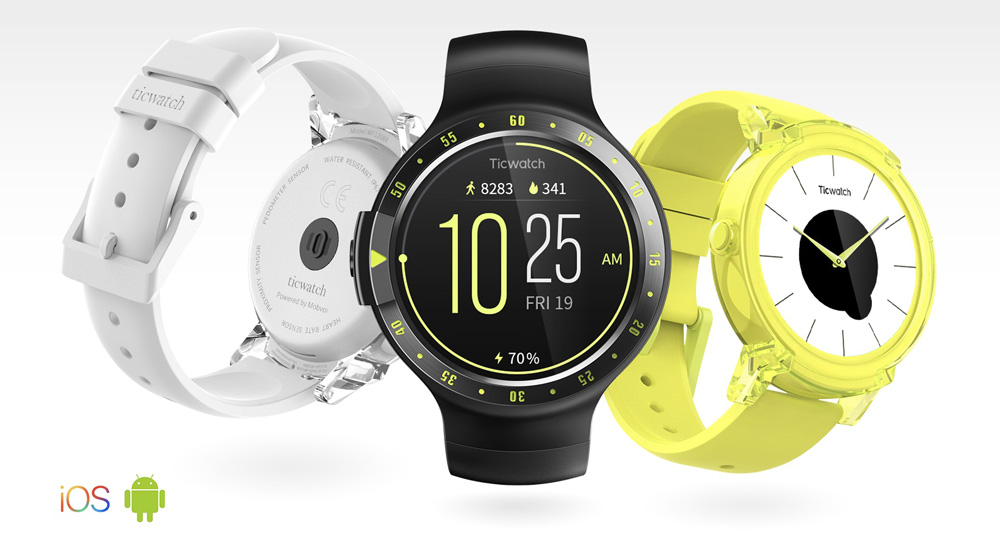
Raised: $ 3,203,497 with a target of $ 100,000.
Deliveries: successfully started in November, the watch has already gone into retail.
Beijing startup Mobvoi is developing smart, and most importantly, affordable watches. In the summer, the developers launched the third generation of their Ticwatch series on Kickstarter: two devices called Ticwatch Express and Ticwatch Sport. Gadgets do everything that users expect from smart watches today: they measure pulse, track steps, burned calories and routes of jogging (autonomously, without being tied to a smartphone!), Show notifications, allow you to dictate the answer to messages or notes, and even play music through connected wireless headphones. The clock is equipped with the Android Wear 2.0 operating system, and the case of each device is protected from ingress of moisture and dust according to the IP67 standard. The main advantage was the price, which ranged from $ 119 for Express and $ 139 for Sport for backers. After the end of the campaign, it increased to $ 159 and $ 199, respectively, but for such a multifunctional smart watch it is very little. For comparison, the Samsung Gear S3 and Apple Watch S3 cost $ 330-400.
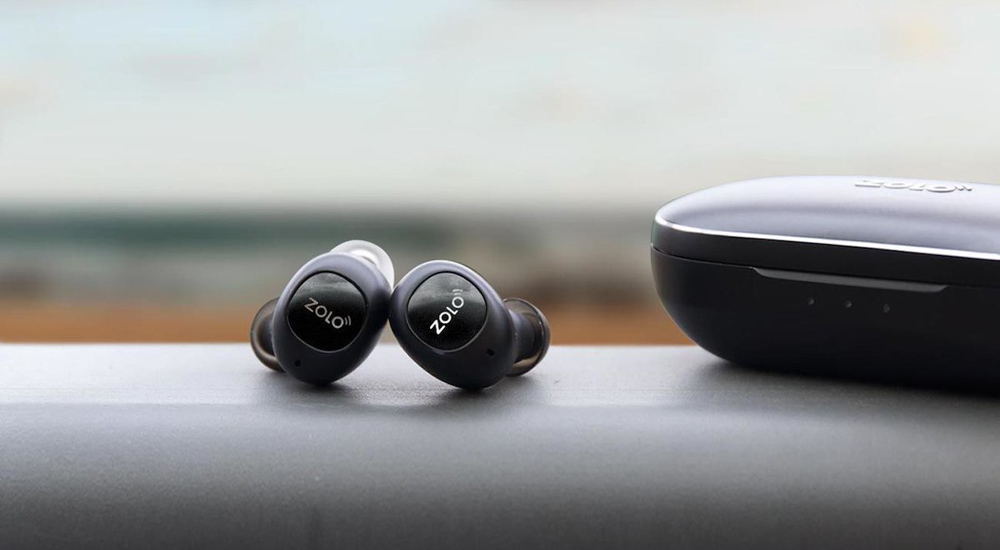
Raised: $ 2,804,277 with a target of $ 50,000.
Deliveries: started at the end of October, as planned.
“Wonder material” graphene is capable of much: it filters water, generates energy, and it also makes excellent batteries and the thinnest armor. However, the first really useful mass graphene device is likely to be headphones — such as Liberty +. These are separate wireless “gags” developed by Anker’s Zola brand. Graphene is applied in a thin layer on their speakers, thereby improving the sound quality, since the “material of the future” holds its shape well. The battery lasts for 3.6 hours of headphones, and together with the charging case, you get 48 hours of “graphene” sound.

Collected: $ 2,649,821 with a target of $ 50,000.
Deliveries: scheduled for January 2018.
To take a really beautiful photo, you need a good camera - and an understanding of how to set its numerous settings correctly. However, soon all the hard intellectual work will be able to take on the “artificial intelligence” of the Arsenal gadget. In fact, the device is a scanner that is attached to a Nikon, Canon, Sony and Fuji mirror or mirrorless camera. Then the algorithms analyze the situation and automatically “correctly” set the parameters, guided by 18 factors (camera vibration, object movement, light, etc.). Arsenal also supports HDR mode and helps you shoot beautiful timelaps. It is not necessary to rely entirely on automation, the settings are twisted from the mobile application, and the result is immediately visible on the screen.

Collected: $ 2,541,846 with a target of $ 50,000.
Deliveries: the first batch should have been delivered in September, but still linger.
Finally, a gadget appeared on Kickstarter, worthy of an old meme with rapper Xzibit. This is an additional screen for the Superscreen smartphone. In fact, it is a regular tablet with a diagonal of 10.1 inches, a touchscreen display, a front and rear camera, a mini-jack connector and a Bluetooth module. Superscreen syncs with iOS and Android devices and works only in tandem with a connected smartphone. Autonomous Superscreen does not work, although, judging by its filling (processor and memory), it could well be. Do you like smartphones, but don't carry tablets? Then we have a tablet for you with which you can use your smartphone while you are using a smartphone.

Collected: $ 2,534,017 with a target of $ 100,000.
Deliveries: scheduled for May 2018.
Startup Biolite has become famous for its unusual tourist stoves with built-in thermogenerators, from which you can charge smartphones. Unfortunately, the latest development of the company - the Firepit smokeless grill - is devoid of a generator. According to the developers, they abandoned such ideas due to the fact that otherwise the price of the device would be astronomical. Therefore, in the grill there is only a built-in battery and air circulation system. Thanks to the blowing, the fire inflames faster, it burns hotter, and all the small particles of soot are burned, not turning into smoke. Firepit works well with wood and coal. Cooking on the grill can be not only kebabs, but also dishes that do not have much extra "smoke". For example, it may be some kind of dessert (the same American commerce).
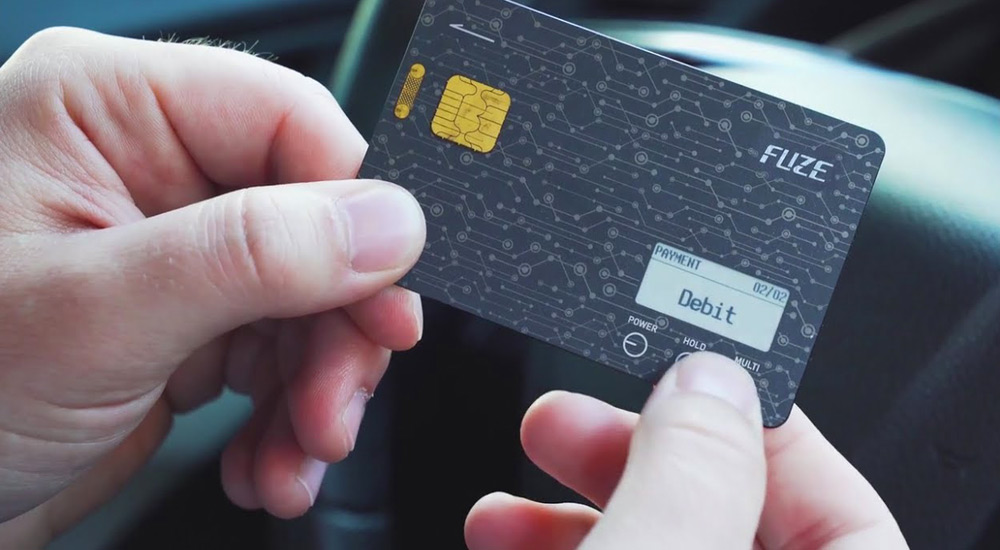
Collected: more than $ 2,300,000 with a target of $ 100,000.
Deliveries: began with a delay in August.
The idea of a universal plastic card pops up on crowdfunding platforms quite regularly, and also fails regularly. However, in the case of the Fuze Card, the idea of a smart card has finally become a reality. This small plastic box holds up to 30 credit, debit, gift and discount cards at a time. Information about the active card is shown on the display of “electronic paper”, and the cards are switched by touch buttons. Fuze is completely analogous to a regular card, that is, it is accepted by ATMs and merchant terminals. The battery is designed for a month of work, in case of loss, the card is erased through a mobile application. Of course, in the world of smartphones and mobile payments, the Fuze card seems a bit redundant. However, so far Apple Pay is not accepted everywhere, so a smart card will definitely not be lying.

Collected: $ 2,277,183 with a target of $ 50,000.
Deliveries: started with a delay of one month in October.
We say "Kickstarter" - we mean "3D printer", we say - "innovative", we mean - "regular and not very interesting." From the pragmatic point of view, the Snapmaker project is really just another crowdfunding 3D printer. It looks beautiful, no extra wires stick up anywhere, and all parts of the case are machined on an aluminum alloy machine. Snapmaker is made up of ten modules, some of which are replaced, so that the 3D printer turns into a small router and a laser engraving machine. The device works with a standard set of filaments - PLA, PVA, ABS. The print area is a cube with an edge of 125 millimeters, and the layer thickness is from 50 to 300 microns. This quite ordinary 3D printer has collected several million dollars and several thousand orders.

Collected: $ 2,209,270 with a target of $ 150,000.
Deliveries: scheduled for November, but not yet started.
The eVscope reflector is more than an ordinary amateur telescope. For its gadget, startup Unistellar has developed a special technology for capturing light with a long exposure. The output is bright and clear images of distant galaxies and stars. If you do not distinguish the Polar Star from Venus, do not worry: the telescope automatically turns and points to the desired point in the sky. Thanks to the program of cooperation with SETI, data from the telescope is sent to scientists (at the request of the device owner, of course). Smart functions are controlled from a connected smartphone.
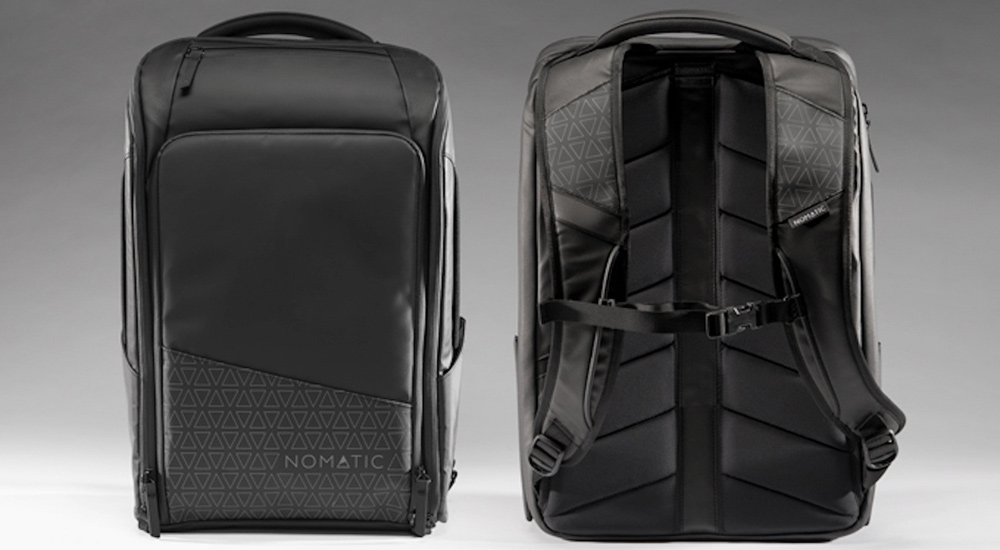
Collected: $ 2,203,254 with a target of $ 50,000.
Deliveries: started and completed on time in December.
Startup Nomatic owes its existence exclusively to the Kickstarter platform, where last year launched the "smart" hybrid of a bag and a backpack designed for travelers. In the summer, the team made an encore with two hybrids - everyday, for 20–24 liters, and designed for short trips, for 20–30 liters. Volumes are not given in the form of ranges, both backpacks, if necessary, change the capacity. And also their straps hide in special pockets, and then the backpacks “turn” into small cases, which need to be carried by the handle on the side. The main feature of the new products is a huge number of compartments, pockets and removable compartments for all occasions.
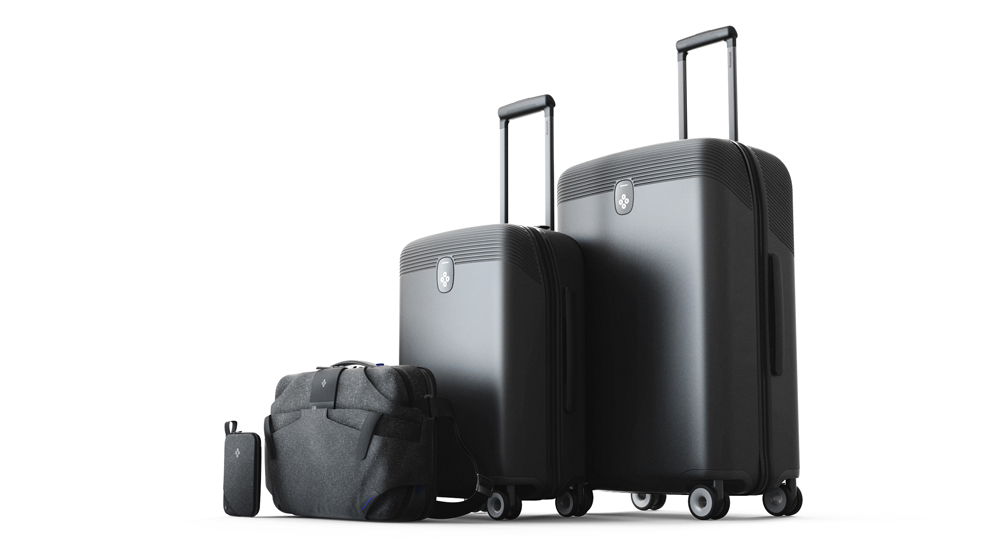
Raised: $ 2,054,015 with a target of $ 50,000.
Deliveries: scheduled for November, started with a delay of a month.
The world's first smart suitcase Bluesmart One has many fans and happy owners, including runner Usain Bolt and Pope. In 2017, its creators returned to Indiegogo with a whole series of smart devices for travelers: with two smart suitcases (for 80 liters, for transportation in luggage, and for 38 liters, for transportation as hand luggage), a smart bag for gadgets and a case for documents. All four things are equipped with Bluetooth beacons, and the luggage is connected to 3G networks. A small suitcase and bag have a crate for charging any external devices, including laptops. All these clever things are combined into one common system by a mobile application and work together. The campaign was successful again, but a cloud hung over the future Bluesmart due to the new restrictions of American airlines on smart luggage. It seems that during his next visit to the US, the Pope will again have to use the old, “stupid” suitcase.



# 1 ZeTime Hybrid Watch

Raised: $ 5,333,792 with a target of $ 50,000.
Deliveries: started on time, in September 2017.
')
In early spring, Swiss startup MyKronoz launched a campaign of hybrid watches ZeTime on Kickstarter. The event at that time seemed insignificant, because dozens, if not hundreds of companies have already tried to create such a device. The results of their collective efforts were invariably disappointing.
However, the developers of ZeTime unexpectedly broke the current bad tradition. How? Elementary! In one watch they connected two convenient interfaces: physical hands and a liquid-crystal touch-screen. The design may seem too cumbersome, but it seems that such hybrid watches were needed by an ordinary person. When using the clock screen, the arrows move apart and do not obscure the information on it. The rest of the time they do what the shooters are supposed to - they show time. MyKronoz competitors tried to replace a full-fledged display with separate LEDs, make the arrows show information, but all this turned out to be not a smart and inconvenient way to bend the user under the designer's will. Nobody likes crutches.

The ZeTime battery is designed for 3 days of active use of watches in “smart” mode, or for a whole month of work in the mode of a regular chronometer (this is not a measly 18 Apple Watch). Waterproof case, optical pulse sensor - just a nice bonus to a decent device.
# 2 Gravity Therapeutic Blanket

Raised: $ 4,729,263 with a target of $ 21,500.
Deliveries: started on time, in October 2017, there was a delay due to an increase in the volume of orders.
Can't sleep? It turns out that a heavy blanket (and not your light, downy) helps you sleep soundly. At least, exactly the solution to the problems with sleep was promised by John Fiorentino, the creator of the therapeutic blanket Gravity. At first, he advertised his development as a remedy for anxiety, “Vietnamese syndrome”, ADHD and stress, but then he had to give up bold statements. Kickstarter, where funds were raised for the production of miraculous devices, prohibits the promotion of medical products.

However, the blanket remained on the site and collected thousands of orders. There are three Gravity options - weighing 9 kilograms, 6.8 and 11.3 kilograms. Weights are polyethylene granules of high density. Ideally, a therapeutic blanket should be 10% of the weight of the owner, then the person wrapped in it feels comfortable. Such blankets often cover children with autism and elderly patients with dementia. There is no research that reliably confirms effective improvement of sleep or treatment of mental disorders. Therefore, Gravity is definitely the hardest placebo that has ever successfully conducted a crowdfunding campaign.
# 3 Pimax 8K Virtual Reality Helmet

Raised: $ 4,236,618 with a target of $ 200,000.
Deliveries: scheduled for January 2018, so far everything is going according to plan.
It seems that the next round of development of virtual reality technology is ending again. That, however, does not prevent enthusiastic engineers from continuing to develop a non-standard format using existing developments - and the Pimax 8K VR helmet is an excellent symbol of the persistence of interest in this topic.

Pimax is developed by the same Chinese startup. The device has the most generous resolution on the market: 3840x2160 pixels for each of the two screens. The viewing angle is 200 degrees, the refresh rate is 75–90 hertz. Moreover, the device is compatible with base stations Steam VR, that is, supports tracking, like the glasses HTC Vive, and works with the same controllers. The displays are made using CLPL technology, which, according to the developers, is much better suited for VR than OLED. For Pimax, this is not the first helmet, so the new campaign was met with criticism from VR skeptics and the joy of virtuality fans.
# 4 Amabrush Smart Toothbrush

Collected: ~ $ 3,794,620 with a target of ~ $ 60,000.
Deliveries: scheduled for December 2017, but disrupted due to manufacturing problems.
2017 was really happy for all those people who hate brushing their teeth. Now they will be able to entrust the boring pursuit of a smart brush to Amabrush, which completely autonomously copes with bloom and stuck delicious pieces. The gadget consists of a vibro-pen and a universal interchangeable silicone cap in the form of a cap with bristles. The cap is magnetized to the handle, after which the latter is placed in the mouth and vibrates for ten seconds. Toothpaste is fed to the bristles from the capsule inside the handle. There is also a battery, the charge should be enough for two weeks of operation of the device. An unusual invention caused the revival of his campaign on Kickstarter, and on Indiegogo even appeared a copy of Amabrush - Unico brush. In the battle for teeth and wallets, the creators of the second device raised the stakes, promising complete cleaning in as little as 3 seconds.
# 5 Pocket GPD Pocket Laptop

Collected: $ 3,567,642 with a target of $ 200,000.
Deliveries: started successfully in June and are still ongoing.
In The Verge edition, the laptop GPD Win was clearly called "a wonderful gaming laptop that fits in your pocket." Alas, miracles do not happen, so in fact the device is quite an ordinary netbook, like its predecessor GPD Pocket, successfully financed by Indiegogo. It really fits in your pocket, because the diagonal of the device is only 7 inches, a little more than the Nintendo Switch. The mini-netbook is equipped with a quad-core Intel Atom processor with a clock speed of 1.6 GHz, 8 gigabytes of RAM and 128 gigabytes of permanent memory. The case is made of magnesium alloy, it provides active cooling (that is, cooler). Display touch, liquid crystal, with IPS-matrix. Lithium-polymer battery is designed for 12 hours of work, and all this hardware works under Ubuntu or Windows 10 Home. It is clear that GPD is indeed possible, but not everything, and a tiny screen causes more problems than the integrated video card. According to user feedback, Cuphead, Overwatch and Witcher 3 are running on a typewriter. The Shenzhen company GPD HK, which developed the GPD Pocket, is preparing to release the second version of the pocket notebook. It will be available for pre-order in January.
# 6 Smart Watch Ticwatch S & E

Raised: $ 3,203,497 with a target of $ 100,000.
Deliveries: successfully started in November, the watch has already gone into retail.
Beijing startup Mobvoi is developing smart, and most importantly, affordable watches. In the summer, the developers launched the third generation of their Ticwatch series on Kickstarter: two devices called Ticwatch Express and Ticwatch Sport. Gadgets do everything that users expect from smart watches today: they measure pulse, track steps, burned calories and routes of jogging (autonomously, without being tied to a smartphone!), Show notifications, allow you to dictate the answer to messages or notes, and even play music through connected wireless headphones. The clock is equipped with the Android Wear 2.0 operating system, and the case of each device is protected from ingress of moisture and dust according to the IP67 standard. The main advantage was the price, which ranged from $ 119 for Express and $ 139 for Sport for backers. After the end of the campaign, it increased to $ 159 and $ 199, respectively, but for such a multifunctional smart watch it is very little. For comparison, the Samsung Gear S3 and Apple Watch S3 cost $ 330-400.
# 7 Liberty + Wireless Headphones with Graphene Drivers

Raised: $ 2,804,277 with a target of $ 50,000.
Deliveries: started at the end of October, as planned.
“Wonder material” graphene is capable of much: it filters water, generates energy, and it also makes excellent batteries and the thinnest armor. However, the first really useful mass graphene device is likely to be headphones — such as Liberty +. These are separate wireless “gags” developed by Anker’s Zola brand. Graphene is applied in a thin layer on their speakers, thereby improving the sound quality, since the “material of the future” holds its shape well. The battery lasts for 3.6 hours of headphones, and together with the charging case, you get 48 hours of “graphene” sound.
# 8 Smart Assistant Photographer Arsenal

Collected: $ 2,649,821 with a target of $ 50,000.
Deliveries: scheduled for January 2018.
To take a really beautiful photo, you need a good camera - and an understanding of how to set its numerous settings correctly. However, soon all the hard intellectual work will be able to take on the “artificial intelligence” of the Arsenal gadget. In fact, the device is a scanner that is attached to a Nikon, Canon, Sony and Fuji mirror or mirrorless camera. Then the algorithms analyze the situation and automatically “correctly” set the parameters, guided by 18 factors (camera vibration, object movement, light, etc.). Arsenal also supports HDR mode and helps you shoot beautiful timelaps. It is not necessary to rely entirely on automation, the settings are twisted from the mobile application, and the result is immediately visible on the screen.
# 9 Extra Screen for Superscreen Smartphone

Collected: $ 2,541,846 with a target of $ 50,000.
Deliveries: the first batch should have been delivered in September, but still linger.
Finally, a gadget appeared on Kickstarter, worthy of an old meme with rapper Xzibit. This is an additional screen for the Superscreen smartphone. In fact, it is a regular tablet with a diagonal of 10.1 inches, a touchscreen display, a front and rear camera, a mini-jack connector and a Bluetooth module. Superscreen syncs with iOS and Android devices and works only in tandem with a connected smartphone. Autonomous Superscreen does not work, although, judging by its filling (processor and memory), it could well be. Do you like smartphones, but don't carry tablets? Then we have a tablet for you with which you can use your smartphone while you are using a smartphone.
# 10 Smokeless brazier Biolite Firepit

Collected: $ 2,534,017 with a target of $ 100,000.
Deliveries: scheduled for May 2018.
Startup Biolite has become famous for its unusual tourist stoves with built-in thermogenerators, from which you can charge smartphones. Unfortunately, the latest development of the company - the Firepit smokeless grill - is devoid of a generator. According to the developers, they abandoned such ideas due to the fact that otherwise the price of the device would be astronomical. Therefore, in the grill there is only a built-in battery and air circulation system. Thanks to the blowing, the fire inflames faster, it burns hotter, and all the small particles of soot are burned, not turning into smoke. Firepit works well with wood and coal. Cooking on the grill can be not only kebabs, but also dishes that do not have much extra "smoke". For example, it may be some kind of dessert (the same American commerce).
# 11 Fuze Card Smart Card

Collected: more than $ 2,300,000 with a target of $ 100,000.
Deliveries: began with a delay in August.
The idea of a universal plastic card pops up on crowdfunding platforms quite regularly, and also fails regularly. However, in the case of the Fuze Card, the idea of a smart card has finally become a reality. This small plastic box holds up to 30 credit, debit, gift and discount cards at a time. Information about the active card is shown on the display of “electronic paper”, and the cards are switched by touch buttons. Fuze is completely analogous to a regular card, that is, it is accepted by ATMs and merchant terminals. The battery is designed for a month of work, in case of loss, the card is erased through a mobile application. Of course, in the world of smartphones and mobile payments, the Fuze card seems a bit redundant. However, so far Apple Pay is not accepted everywhere, so a smart card will definitely not be lying.
# 12 Snapmaker All-Metal 3D Printer

Collected: $ 2,277,183 with a target of $ 50,000.
Deliveries: started with a delay of one month in October.
We say "Kickstarter" - we mean "3D printer", we say - "innovative", we mean - "regular and not very interesting." From the pragmatic point of view, the Snapmaker project is really just another crowdfunding 3D printer. It looks beautiful, no extra wires stick up anywhere, and all parts of the case are machined on an aluminum alloy machine. Snapmaker is made up of ten modules, some of which are replaced, so that the 3D printer turns into a small router and a laser engraving machine. The device works with a standard set of filaments - PLA, PVA, ABS. The print area is a cube with an edge of 125 millimeters, and the layer thickness is from 50 to 300 microns. This quite ordinary 3D printer has collected several million dollars and several thousand orders.
# 13 Smart Telescope eVscope

Collected: $ 2,209,270 with a target of $ 150,000.
Deliveries: scheduled for November, but not yet started.
The eVscope reflector is more than an ordinary amateur telescope. For its gadget, startup Unistellar has developed a special technology for capturing light with a long exposure. The output is bright and clear images of distant galaxies and stars. If you do not distinguish the Polar Star from Venus, do not worry: the telescope automatically turns and points to the desired point in the sky. Thanks to the program of cooperation with SETI, data from the telescope is sent to scientists (at the request of the device owner, of course). Smart functions are controlled from a connected smartphone.
# 14 Nomatic Multifunction Backpacks

Collected: $ 2,203,254 with a target of $ 50,000.
Deliveries: started and completed on time in December.
Startup Nomatic owes its existence exclusively to the Kickstarter platform, where last year launched the "smart" hybrid of a bag and a backpack designed for travelers. In the summer, the team made an encore with two hybrids - everyday, for 20–24 liters, and designed for short trips, for 20–30 liters. Volumes are not given in the form of ranges, both backpacks, if necessary, change the capacity. And also their straps hide in special pockets, and then the backpacks “turn” into small cases, which need to be carried by the handle on the side. The main feature of the new products is a huge number of compartments, pockets and removable compartments for all occasions.
# 15 Bluesmart Series 2 Smart Bags

Raised: $ 2,054,015 with a target of $ 50,000.
Deliveries: scheduled for November, started with a delay of a month.
The world's first smart suitcase Bluesmart One has many fans and happy owners, including runner Usain Bolt and Pope. In 2017, its creators returned to Indiegogo with a whole series of smart devices for travelers: with two smart suitcases (for 80 liters, for transportation in luggage, and for 38 liters, for transportation as hand luggage), a smart bag for gadgets and a case for documents. All four things are equipped with Bluetooth beacons, and the luggage is connected to 3G networks. A small suitcase and bag have a crate for charging any external devices, including laptops. All these clever things are combined into one common system by a mobile application and work together. The campaign was successful again, but a cloud hung over the future Bluesmart due to the new restrictions of American airlines on smart luggage. It seems that during his next visit to the US, the Pope will again have to use the old, “stupid” suitcase.


Source: https://habr.com/ru/post/374139/
All Articles